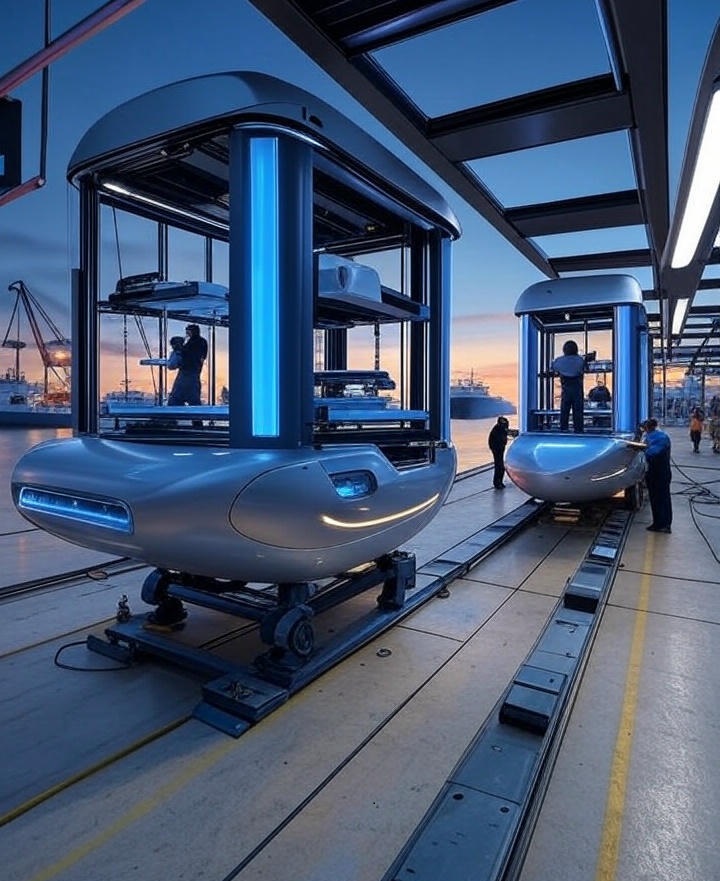
The vast oceans are stirring with a bold upheaval, a maritime metamorphosis driven by the circular economy that’s reimagining shipbuilding. This isn’t merely about forging vessels—it’s a renaissance of renewal, where discarded relics morph into mighty ships, and waste weaves into wealth. Picture shipyards humming with ingenuity, where sustainability and profitability sail hand in hand. This is the dawn of a transformative tide, propelling the industry toward a greener, more resilient future. Join us as we navigate the currents of this revolution and uncover its profound impact.
Shifting Seas: Embracing Circularity
For generations, shipbuilding followed a straight-line saga: harvest resources, construct ships, and abandon them to rust. Steel languished in scrapheaps, composites cluttered landfills, and the earth’s bounty dwindled. Enter the circular economy—a dynamic loop where materials cycle endlessly, reborn rather than discarded. This paradigm champions recycling, reusing, and re-envisioning, ensuring ships thrive sustainably. With oceans groaning under pollution and regulations tightening, shipbuilders are diving into this shift, crafting vessels that breathe new life into old materials.
The urgency is palpable. Maritime transport devours 300 million tons of fuel annually, spewing emissions that demand action. The circular economy emerges as a beacon, curbing waste and carbon footprints while sparking economic vitality. It’s a siren song luring shipowners, environmentalists, and visionaries into its fold.
Recycling: Transforming Rust into Robustness
At the heart of this upheaval lies recycling, the alchemy of turning relics into resilience. Steel, the stalwart of traditional shipbuilding, once met its end in junkyards. Now, cutting-edge recycling furnaces melt these remnants, forging fresh plates and girders with remarkable efficiency. Advanced alloy recovery systems ensure even the smallest shards contribute, slashing the need for virgin ore and conserving the planet’s reserves.
Composites, once a disposal dilemma due to their intricate blend, are undergoing a revival. Pioneering shredding and reprocessing techniques dismantle them into reusable fibers and resins. These revitalized materials fortify hulls and decks, proving that yesterday’s debris can fuel tomorrow’s triumphs. Shipyards are abuzz with this magic, converting rust into robustness while trimming costs.
Reuse: Granting Ships a Second Odyssey
Reuse elevates this revolution, breathing new voyages into aging vessels. Retired ships, once slated for the scrapyard, now undergo meticulous disassembly. Engines, propellers, and cabins are refurbished, finding new roles in fresh builds or upgrades. This isn’t mere salvage—it’s a symphony of sustainability, where every component earns a reprise.
Consider naval fleets, where warships conclude decades of duty. Their sturdy skeletons are repurposed into commercial carriers or training platforms, extending their seafaring saga. Cruise liners, too, embrace this rebirth, with interiors revamped to dazzle modern travelers. This reuse resurgence shortens production timelines, curtails resource demands, and paints shipbuilding with a greener hue.
Redesigning for a Perpetual Cycle
The circular economy transcends recycling and reuse—it reimagines design from the hull up. Shipbuilders are sculpting vessels with modularity at their core, where parts interlock like a seamless puzzle, easy to swap or recycle. Envision hull segments with detachable panels or engines crafted for effortless upgrades. This foresight ensures ships evolve over time, minimizing waste and maximizing endurance.
Materials steal the spotlight here. Bio-based composites, spun from plant fibers, offer a renewable twist to petroleum-based resins. Graphene-infused coatings, sleek and sturdy, shield hulls while remaining recyclable. These choices embed sustainability into every plank, drawing eco-savvy clients and aligning with the circular creed.
The Ecological and Economic Surge
This revolution yields dual dividends for the planet and profit. Lighter, recycled materials reduce fuel consumption, saving shipowners millions yearly. A cargo vessel rebuilt with circular tenets might shed tons, gliding with less drag and fewer emissions. Research hints at a potential 30% carbon reduction, a melody that harmonizes with regulatory demands.
Economically, this model sparks jobs—recycling facilities, refurbishment centers, and design ateliers are sprouting. It also eases resource scarcity, a pressing issue as steel and aluminum prices climb. For shipyards, this is a golden gateway to secure contracts from green-focused clients and governments chasing net-zero oceans.
Weathering the Storms Ahead
Yet, this tide carries challenges. Upgrading old shipyards for circular practices demands significant capital, daunting smaller operators. Sorting and processing diverse materials requires advanced tech, and regulations crawl to certify recycled parts. Skilled crews need retraining to master these innovations. Still, the horizon glows—pilot projects prove feasibility, and costs dip as adoption swells.
The Future Sets Sail
Imagine a fleet of tomorrow’s ships, their hulls woven from recycled threads, their engines pulsing with refurbished might. Picture naval vessels, modular and adaptable, serving beyond their prime. Envision cruise liners, their interiors reborn from past journeys, cruising sustainably into the dawn. This is the revolution on the waves—a circular economy that fuels shipbuilding with vision and vigor.
The maritime realm stands at a turning point. Circular principles are no longer a choice; they’re the compass guiding us to a thriving, eco-conscious future. As shipyards embrace recycle and reuse, they’re not just crafting ships—they’re forging a legacy. The seas beckon, and this revolution answers with every ripple.










